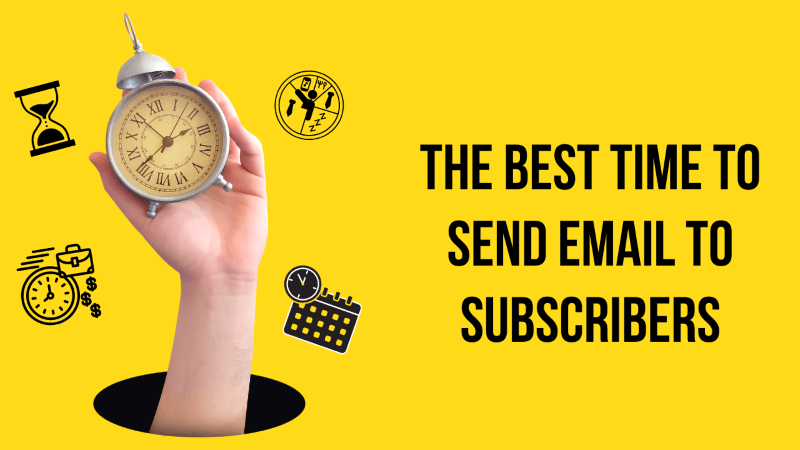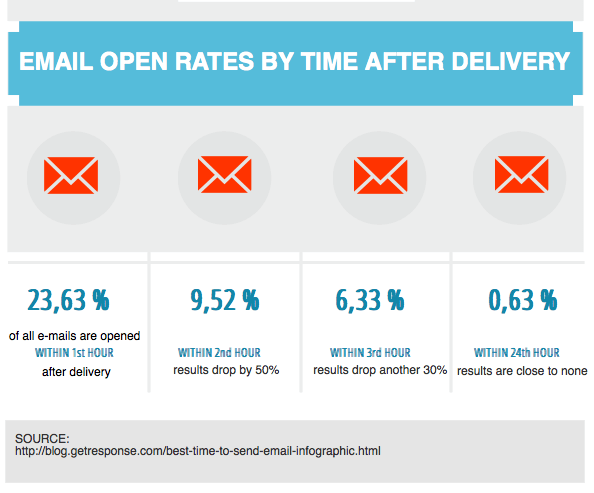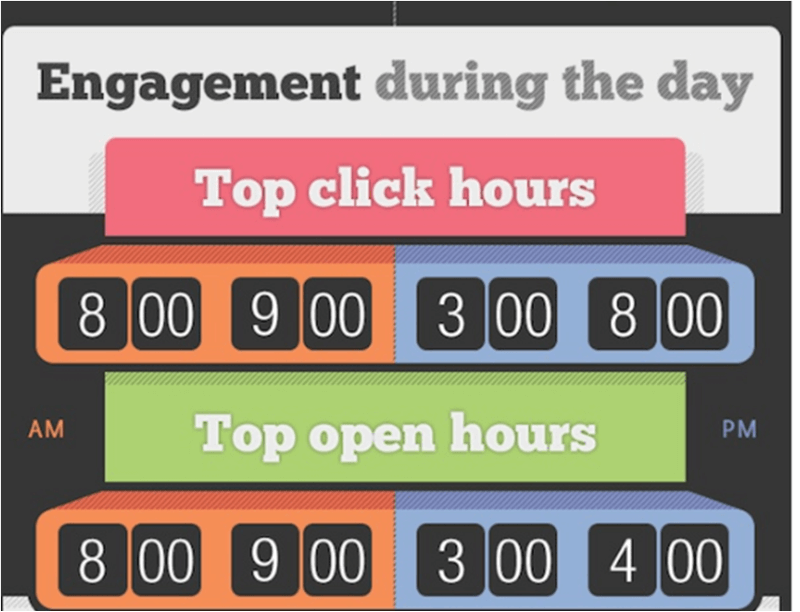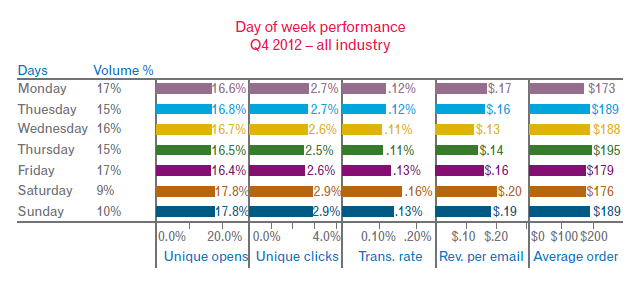The Best Time to Send Email to Subscribers

Email should be the power player of your inbound marketing strategy.
In case you haven’t heard, it’s still an incredibly effective method of connecting with consumers. The Direct Marketing Association reports that email drives more ROI than any other form of outreach for 67% of companies, and it’s the top source for new sales for 30% of marketers.
Concerned that email marketing is a “push tactic” that could cast you as an interruption marketer? It’s definitely not pushy if you’re doing it right, by segmenting your list and taking the time to send messages filled with relevance and value to your contacts. Even Chris Brogan, a leading champion of permission-based marketing tactics recently stated that his email efforts drive ten times more revenue than his social presence.
That being said, a critical first step towards taking full advantage of this platform is figuring out the best time to send email. There’s 24 hours in a day, and these hours include times when your prospects definitely don’t have time to think about opening your email newsletters, or clicking-through to your landing page. Your prospects probably won’t get around to opening your messages later, either.
Nearly ¼ of email opens occur within an hour of sending, and your chances of having your email opened and read drop 50% an hour later.

Inspired by a truly impressive study by GetResponse, which analyzed the metrics of 21 million emails in order to find the best time to send email, we’ve curated some fresh data to help you get the best metrics possible:
1. Inbox Clutter is Not Your Friend
The most common time for commercial email messaging is in the morning. 38.7% of eBlasts occur between 6am and 12pm. The second most-common time of day is the evening hours, between 6pm and midnight, at nearly 30%. If you ever needed to be convinced that you shouldn’t just copy your competition, there is a positive correlation between sending at less-busy times of the day, and having your emails gain notice. It makes sense, really. If you’re emailing your list contacts during their evening commute, your message could be ignored amidst the rest of their cluttered inbox.
Take Action: Following the trend isn’t necessarily your friend when it comes to identifying the best time to send email to your subscribers. Choosing the off-trend option of emailing in the early afternoon could improve your campaign’s chances of gaining notice.
2. Coincide With Corporate Schedules
Whether you’re in the B2B or B2C market, there’s a good chance you’ll see the best engagement if you match your campaigns to the times of the day when the typical worker engages with their email account: upon arrival to work, and before leaving. GetResponse found that the times which drove the highest open rates of messages were 8:00 and 9:00am, and 3:00 and 4:00pm. The best time to send email for click-through rates was a close match, with an additional spike at 8:00pm:

Take Action: Remember, not everyone checks their email continuously throughout the day. Map the times you send emails to when your prospects are most likely checking their email.
3. Don’t Fear the Weekend
Sending emails on the weekend carries something of a stigma among marketers, particularly in the B2B realm. However, recent data from Experian indicates this taboo might need to be laid to rest. Their 2013 survey found that email marketing volume drops dramatically on Saturdays and Sundays, but open rates are significantly higher than any other time of the week.

Take Action: In our mobile-driven world, most people never truly leave their job or their email accounts behind. Don’t be afraid to schedule a weekend send as an experiment. You’ve certainly got data on your side.
4. Consider Time Zones
Jupiter Research has found that relevant emails drive 18 times more revenue than broadcast messages. For brands with a reach or subscriber base that spans multiple time zones, identifying the best time to send email could be among the most profitable ways to increase your relevance. If you have sufficient demographic insights on your clients to segment your list by time zone, it could significantly improve the performance of your outreach. Scheduling your emails to send to each segment at an optimal time of day, like 8am and 3pm, could ensure you’re able to leverage the best time to send email for all of your contacts.
5. Take Best Practice Data With a Grain of Salt
While GetResponse and Experian’s studies were extensive, best practices can vary drastically according to industry, and more importantly, buyer personas. If your ideal customer doesn’t work a typical corporate schedule, recommendations to send email at 8am could prove pointless. The only reliable way to identify the best time to send email for your company is through testing and analysis. Experiment often, and apply insights quickly.
Has your company done any testing on the best time to send email newsletters? Did your results closely match the best practices presented by GetResponse or Experian?

Comments (0)